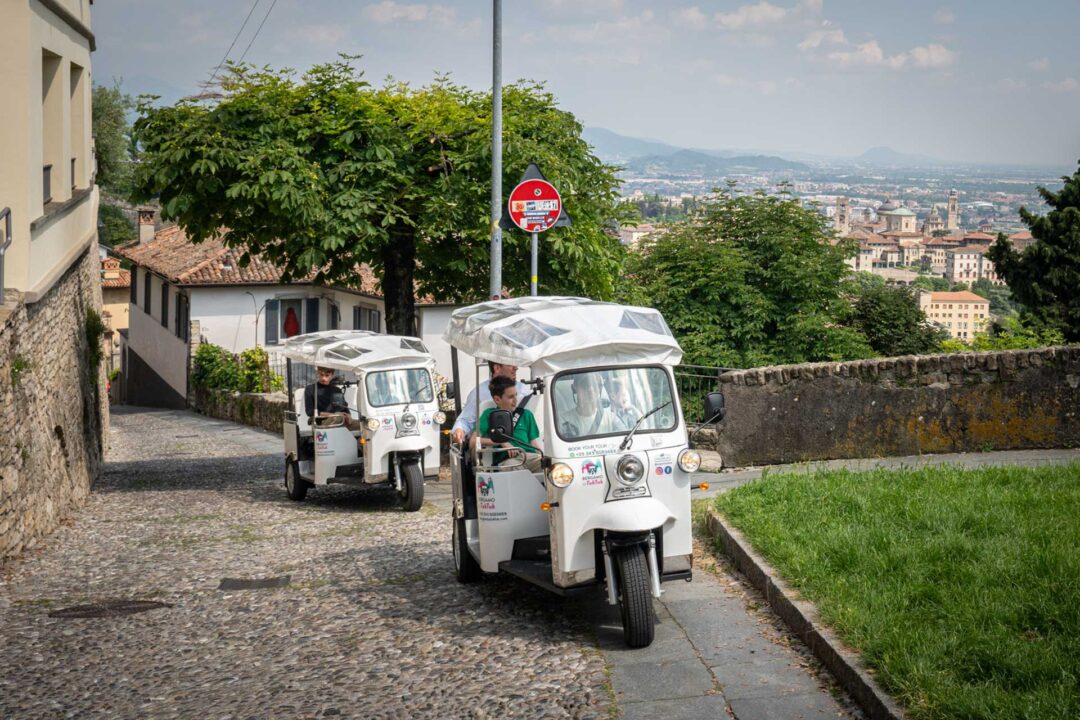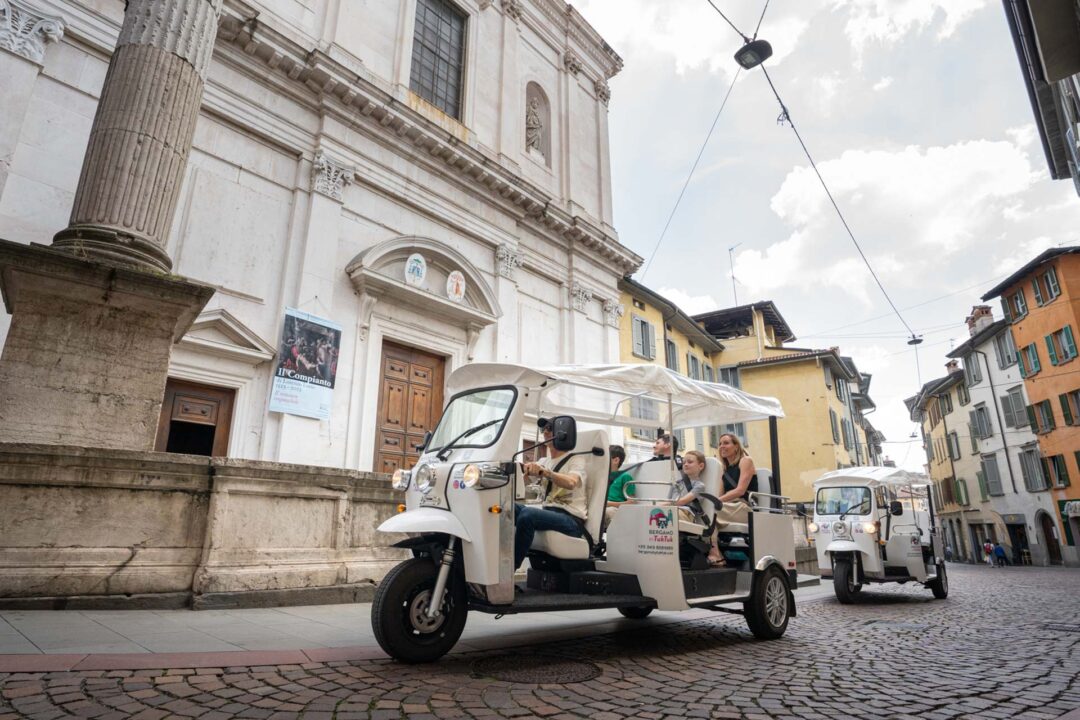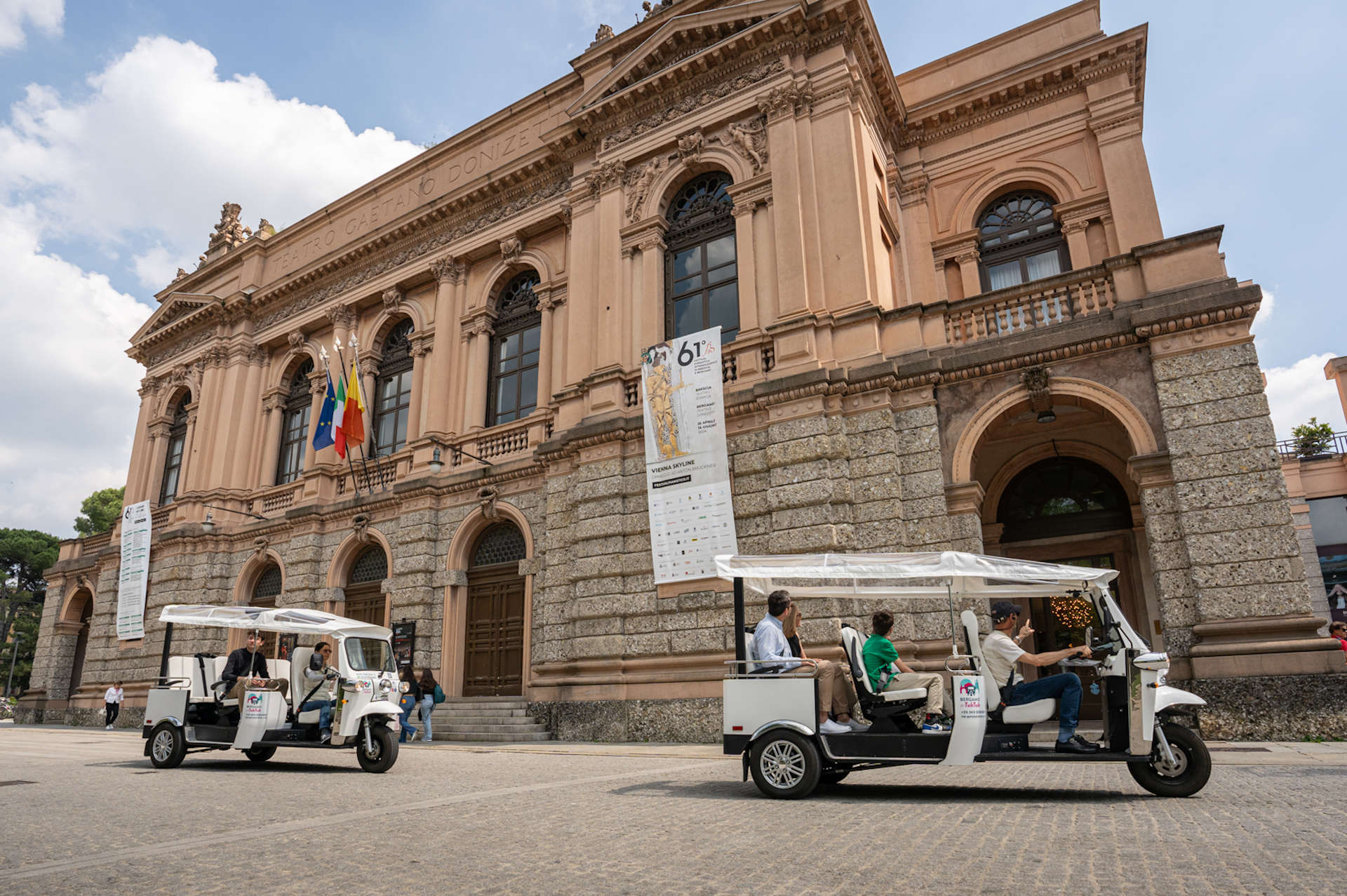
- Home
- >
- Travel Stories
- >
Theatres in Bergamo: history and shows featuring opera, drama and art workshops

20 November 2024
Bergamo is a cultural and historical treasure trove, and its theatres are a clear example of this. This city offers a vibrant and diverse theatre scene that reflects the richness of both its history and its artistic heritage. Bergamo is a city that lives and breathes theatre, offering a variety of cultural experiences ranging from classical performances to contemporary innovations.
Unfortunately, some of the historical Bergamo theatres, both in the Upper Town and in the Lower Town, do not exist anymore. These venues used to be places of great cultural activity for Bergamo in past eras.
Here is a short list:
- San Cassiano Theatre(1637-1937)
Located in Via Donizetti, opposite the Archpriest’s Palace in the Upper Town, it was demolished in 1937. - Palazzo della Cittadella Theatre(1760)
Located inside the Cittadella Palace, it was an important performance venue in the 18th century. - Cerri Theatre in Palazzo della Ragione(1807)
This theatre, located in the Palazzo della Ragione in Città Alta, was also an important cultural centre at the time. - Duse Theatre(1927)
Located in Città Bassa, near the Rotonda dei Mille, it was one of the most recent theatres in Bergamo – but it was then closed and no longer exists.

How many theatres are there in Bergamo?
Donizetti Theatre in Bergamo
The Donizetti Theatre in Bergamo is one of the most important historical theatres in Italy, and it bears the name of the famous Bergamo composer Gaetano Donizetti. Located in the heart of the città bassa, along the ‘Sentierone’, Bergamo’s main pedestrian street, this theatre is a cultural landmark for opera, drama and symphonic music lovers.
The origins of the theatre date back to the end of the 18th century, when it was built on the initiative of the local bourgeois society. Opened in 1791 under the name ‘Ricciardi Theatre’, the venue soon affirmed itself as a major artistic centre. The theatre was named after Donizetti in 1897, in honour of the 100th anniversary of the birth of the composer, one of the most famous figures of the city of Bergamo and of Italian musical history.
The theatre’s architecture reflects the classical canons of the time, with an elegant façade and a refined interior featuring frescoes, stucco and golden decorations. The main hall, with its traditional ‘horseshoe’ layout, is an intimate and majestic venue at the same time, and it can accommodate up to 1,154 people.
Throughout its long history, the Gaetano Donizetti Theatre in Bergamo has seen the greatest names in opera and international theatre take turns on its stage. However, the connection with Donizetti remains the true core of the theatre’s identity. Every year, the Donizetti Opera Festival takes place – an event dedicated to the rediscovery and celebration of the composer’s operas, with original productions and innovative stagings that attract fans from all over the world.
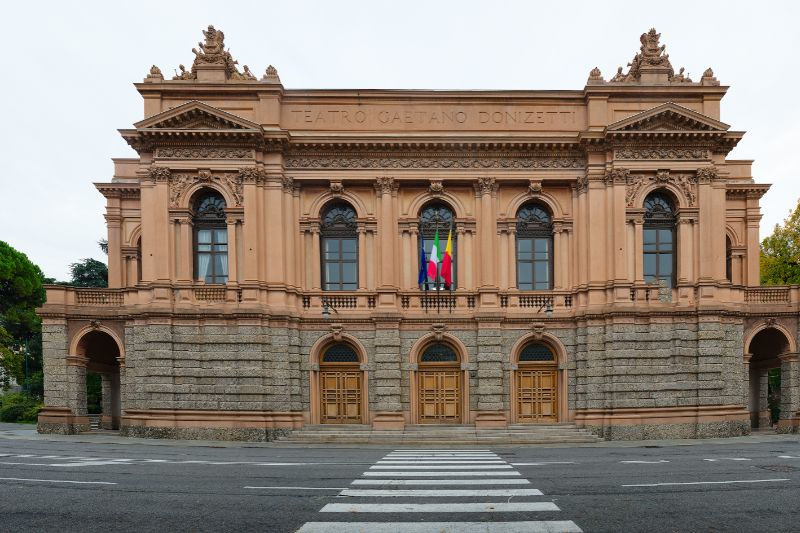
Donizetti Theatre in Bergamo
A bit of history: the fire of 1797
On the 25th of August 1797, a devastating fire destroyed the building almost completely, making reconstruction necessary.
The reconstruction, financed by the Riccardi family as well, made it possible to build a renovated and larger theatre. It was completed in the year 1800, and the theatre quickly resumed its activities, becoming an important cultural landmark for the city. Later, in 1897, as we mentioned above, the theatre was named after the famous Bergamo composer Gaetano Donizetti.
Recently, thanks to an extensive restoration project that lasted several years, the Donizetti Theatre has returned to its original splendour, offering a rich programme that ranges from opera to drama, from concerts to family shows.
Bergamo Teatro Sociale
Another important theatre in Bergamo is the Teatro Sociale. Located in Via Colleoni, in the heart of Città Alta, this theatre was inaugurated on the 26th of December 1808, during the Napoleonic period, and it is an example of neoclassical architecture, with an elegant and refined structure that is well integrated with its historical surroundings.
Commissioned by the Società del Teatro Sociale, composed of noble families from Bergamo, the theatre was designed by architect Leopoldo Pollack, a disciple of Giuseppe Piermarini, the famous architect of Milan’s La Scala Theatre. Despite its initial success, the Teatro Sociale experienced a period of decline during the 20th century.
After the construction of the Donizetti Theatre, in fact, this theatre in Bergamo gradually lost its central position and, in the mid-20th century, closed its doors. It was abandoned for many years until, between 2006 and 2009, it was restored to its former glory thanks to an ambitious restoration project.
Today, the Teatro Sociale is once again one of the city’s main cultural centres. Its programmes range from classical works to contemporary performances, attracting a diverse audience and contributing to the cultural vibrancy of Bergamo’s theatres.
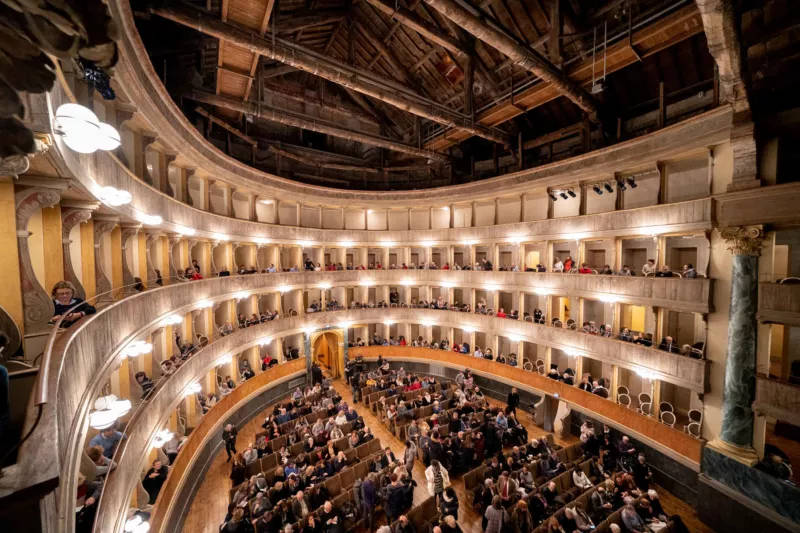
Teatro Sociale in Bergamo – Picture taken from www.teatrodonizetti.it
Other Bergamo Theatres
In addition to the two main theatres, there are many other venues in the city dedicated to theatre and cultural events of various kinds.
Sant’Andrea Theatre
The Sant’Andrea Theatre in Bergamo is a cultural space known for its significant role in promoting the performing arts. Inaugurated as part of a cultural redevelopment project, the Sant’Andrea Theatre has established itself on the Bergamo theatre scene thanks to a diverse and high-quality programme. It hosts theatre plays and performances ranging from traditional Italian and international classics to new contemporary plays, offering a platform for emerging companies and established artists.
San Giorgio Theatre
It is a small theatre run by the Teatro Prova company of Bergamo, founded in 1983 by actor and director Umberto Verdoni. It mainly features shows by independent theatre companies.
Teatro Tascabile in Bergamo (T.T.B.)
It is a historical research theatre company that has its own space in the former Monastero del Carmine, in the Upper Town. The TTB also organises outdoor performances and theatre workshops.

Former Monastero Del Carmine (Teatro Tascabile in Bergamo)
Piazza Libertà Auditorium
This multifunctional space hosts a variety of events: cultural festivals, concerts, theatre performances and conferences.
Qoelet Theatre
It is located in the Redona neighbourhood. It is a space dedicated to film screenings that often also hosts children’s plays, family shows, concerts and various festivals.

